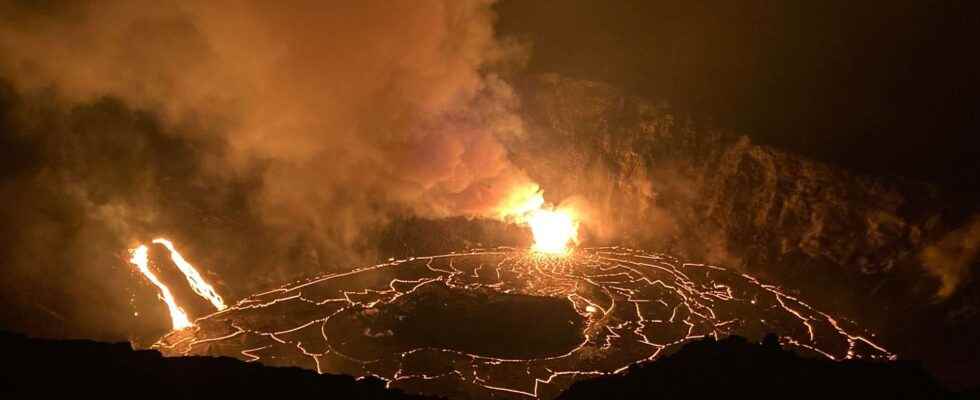The lavas produced in the volcanoes of certain hot spots have a particularity: they are rich in CO2 and carbonates. The rocks resulting from these magmas are what are called carbonatites. They are found in particular in the Hawaiian archipelago. However, the origin of these magmas is still very poorly understood.
You will also be interested
[EN VIDÉO] Interview: the different types of volcanoes, with Jacques-Marie Bardintzeff Volcanoes play a very important role for the planet and have done so for billions of years. When some are considered sacred, others have extraordinary characteristics … © Futura
In a study published in the journal Earth-Science Reviews, two researchers compiled around 400 analyzes of volcanic rocks from the rejuvenation phase of Hawaiian volcanism.
Hot spots are associated with a very hot mantle rise (a plume). In fgeneral, hot spots are considered as fixed magmatic architectures with respect to the plate movement. It is this peculiarity that gives birth to archipelagos like that of Hawaii: the lithospheric plate moves above the hot spot, which will thus give birth to a series of volcanic islands aligned in the direction of the plate.
Normally, active volcanism is therefore found on the island directly above the hot spot, as was the case with the last eruption of Cumbre Vieja in the Canary archipelago. The oldest islands are therefore the furthest from the position of the hot spot. However, it happens that these islands, whose volcanoes have been extinct for several million years, are experiencing a resurgence of volcanic activity. This is called the rejuvenation phase.
In the case of the Hawaiian volcanoes, some became active again 500,000 to 3 million years after leaving the hot spot. The rejuvenation phase would be associated with the fact that a hot spot is not centered at a precise point but has a fairly large area of influence. If the privileged area of influence is the one directly above the mantle plume, older areas may therefore also still be affected by late volcanism.
Carbonatites: volcanic rocks with a very particular composition
The geochemical study of the rocks of this recent volcanism on the island of Hawaii shows that the carbonatitic magmas at the origin of these rocks are the result of certain chemical interactions during the ascent of the liquid magmatic in the earth’s mantle. These rocks alkaline are also particularly enriched in volatile elements, and in particular in CO2. Their chemical composition rich in carbonates testifies to a contamination of the magmatic liquid of the plume by the rocks of the mantle. This is the process of metasomatism, which consists of transfers ofchemical elements between a magmatic fluid and the surrounding rocks, which are the peridotites. The presence of CO2 in the magmatic liquid rising in the mantle plume would also promote these transfers of chemical elements.
Intense chemical exchanges during the rise of the magma
The results of the study conducted by Anastassia Borisova (Géosciences Environnement Toulouse and University of Moscow) and Romain Tilhac (University of Grenade, Spain), show that carbonatitic metasomatism would have taken place less than 4.2 million years ago, at a temperature above 1,100 ° C and at a pressure greater than 2 GPa (about 70 km deep). The particular composition of the volcanic rocks of Hawaii therefore suggests that the reactions of metasomatism would have occurred on an already cooled ascending magma. In addition, the carbon present in the magmatic liquids of the Hawaiian plume as CO2 would, meanwhile, come from recycling mantle (over 1 billion years old), or would be the result of chemical interactions at the base of the hot spot.
The specificity of puddles of the Hawaiian rejuvenation phase would therefore be the result of intense chemical interactions between the magmatic liquid and the host rocks throughout the rise of the plume.
Interested in what you just read?
.
fs11
